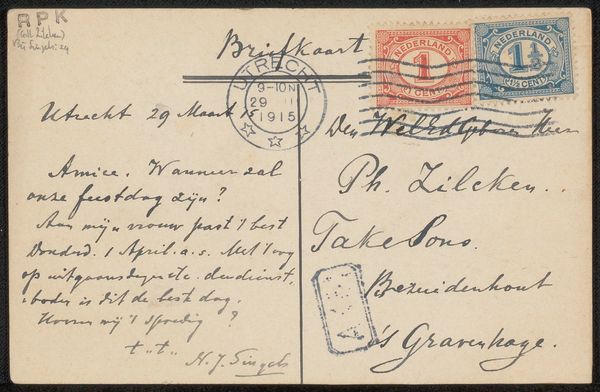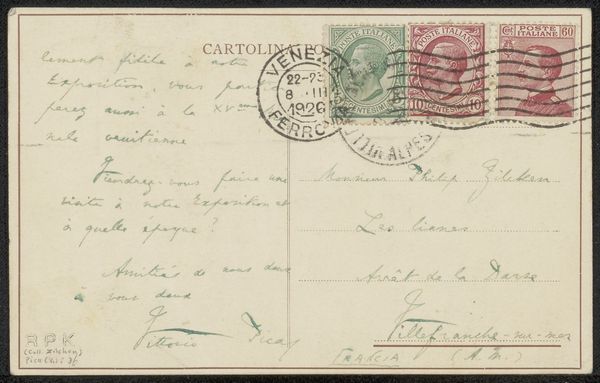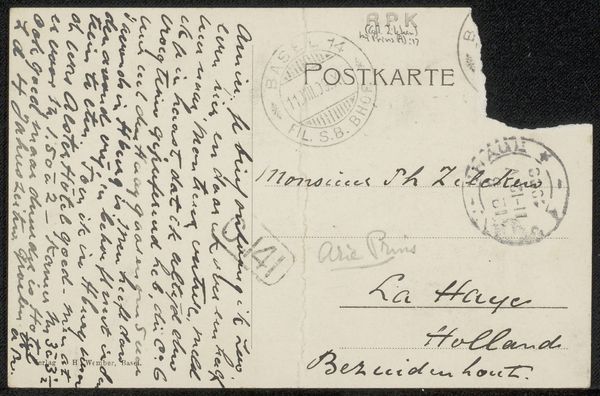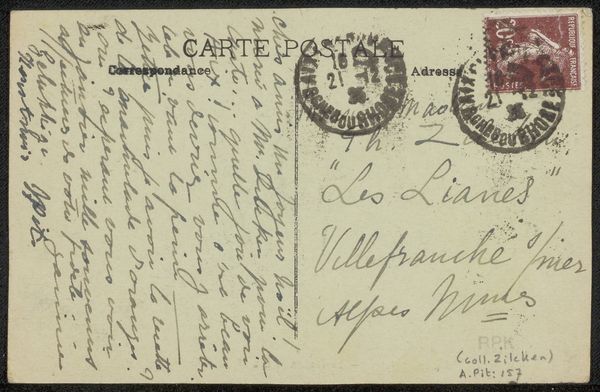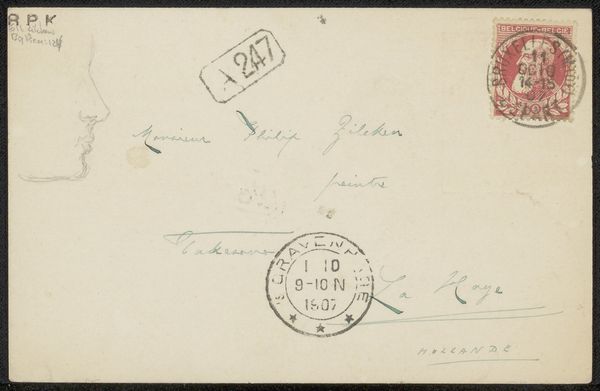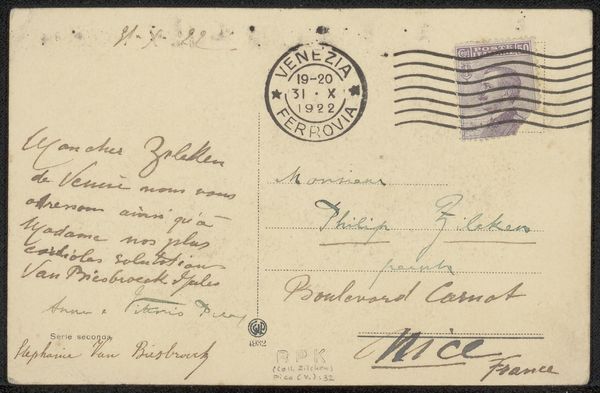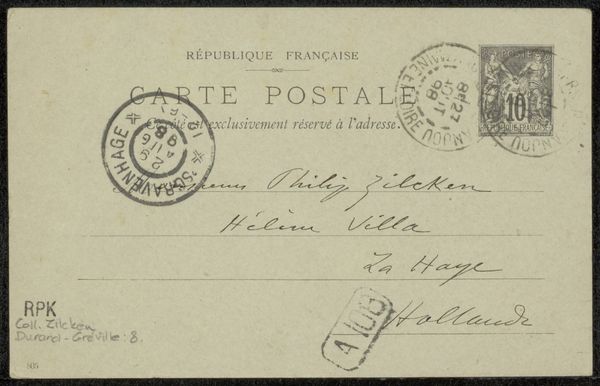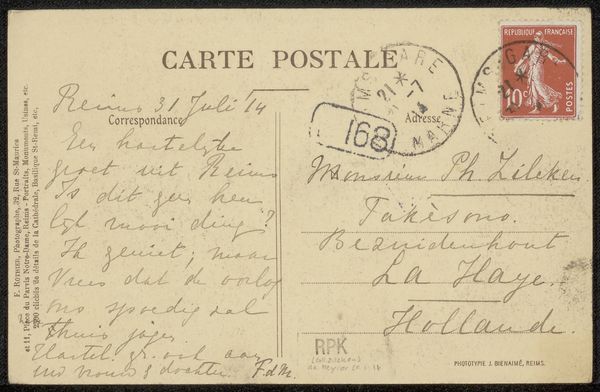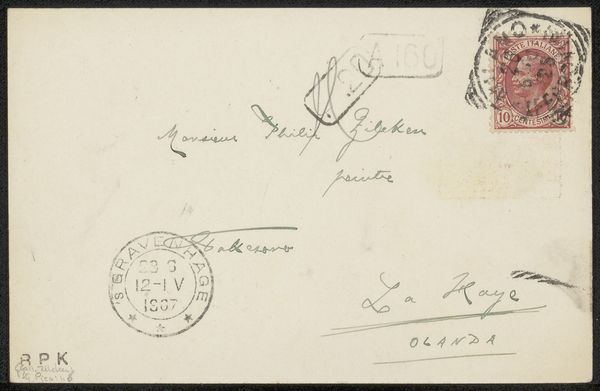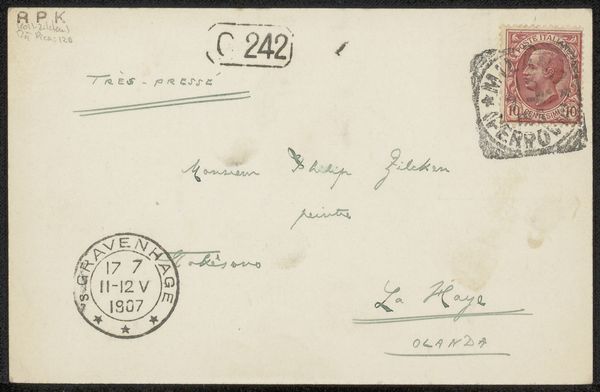
drawing, print, paper, ink, pen
#
drawing
#
pen drawing
# print
#
pen sketch
#
paper
#
ink
#
pen
Copyright: Rijks Museum: Open Domain
This postcard, sent to Philip Zilcken in 1920 by Rose Imel, is a perfect example of how everyday objects can become works of art. The layered handwriting, the stamp, the smudges – it’s all part of the composition. Look at the way Imel's handwriting creates dynamic lines across the card. The ink varies in tone, which adds to the texture and depth. Notice how some strokes are thick and confident, while others are thin and hesitant, almost like a dance. The overall impression is both intimate and abstract. It reminds me of Cy Twombly's scribbled paintings, where language becomes pure form. Like Twombly, Imel embraces imperfection, turning the act of writing into a gestural performance. It's a reminder that art isn't always about polished surfaces, but about capturing the messy, beautiful process of being human.
Comments
No comments
Be the first to comment and join the conversation on the ultimate creative platform.


